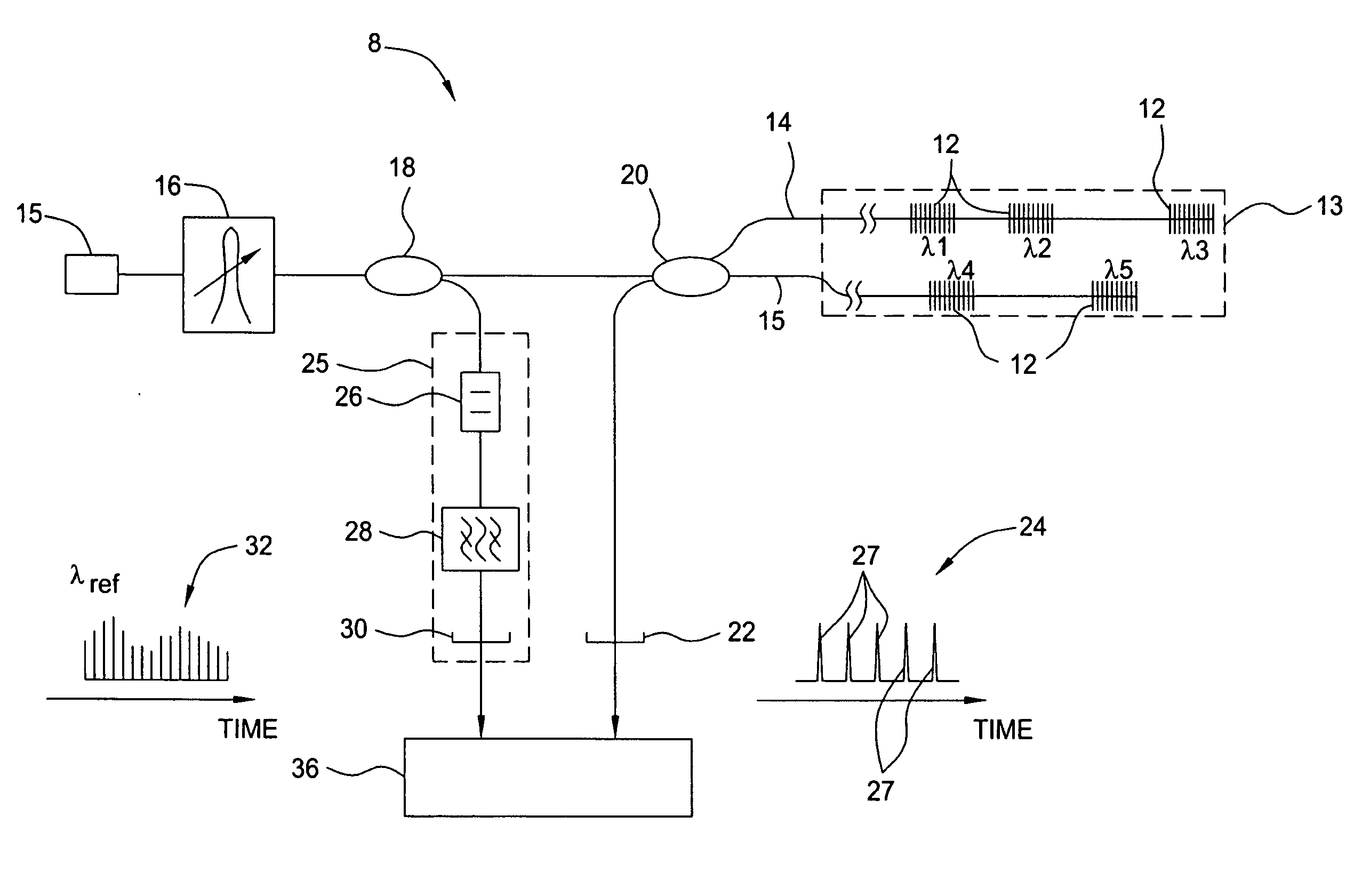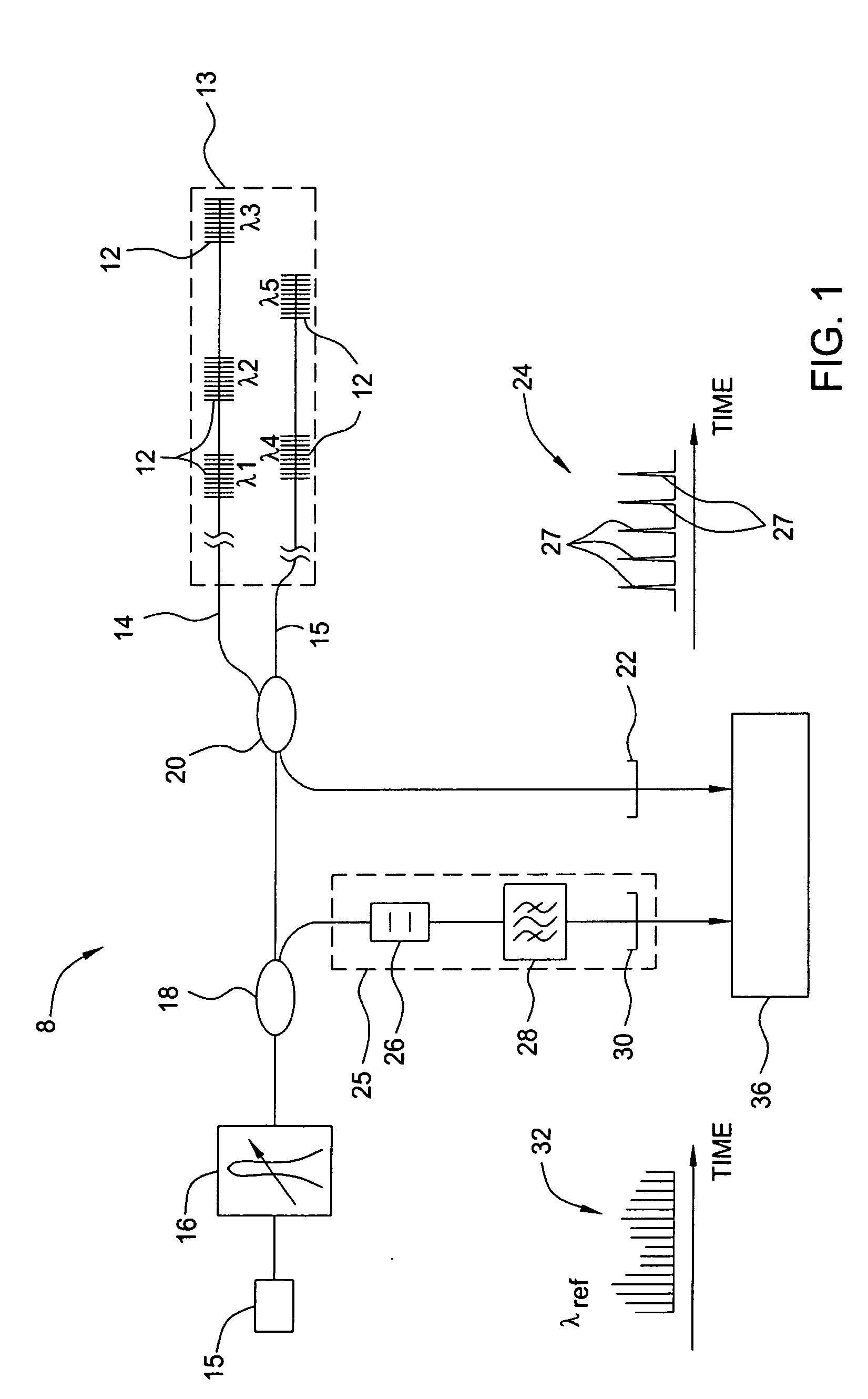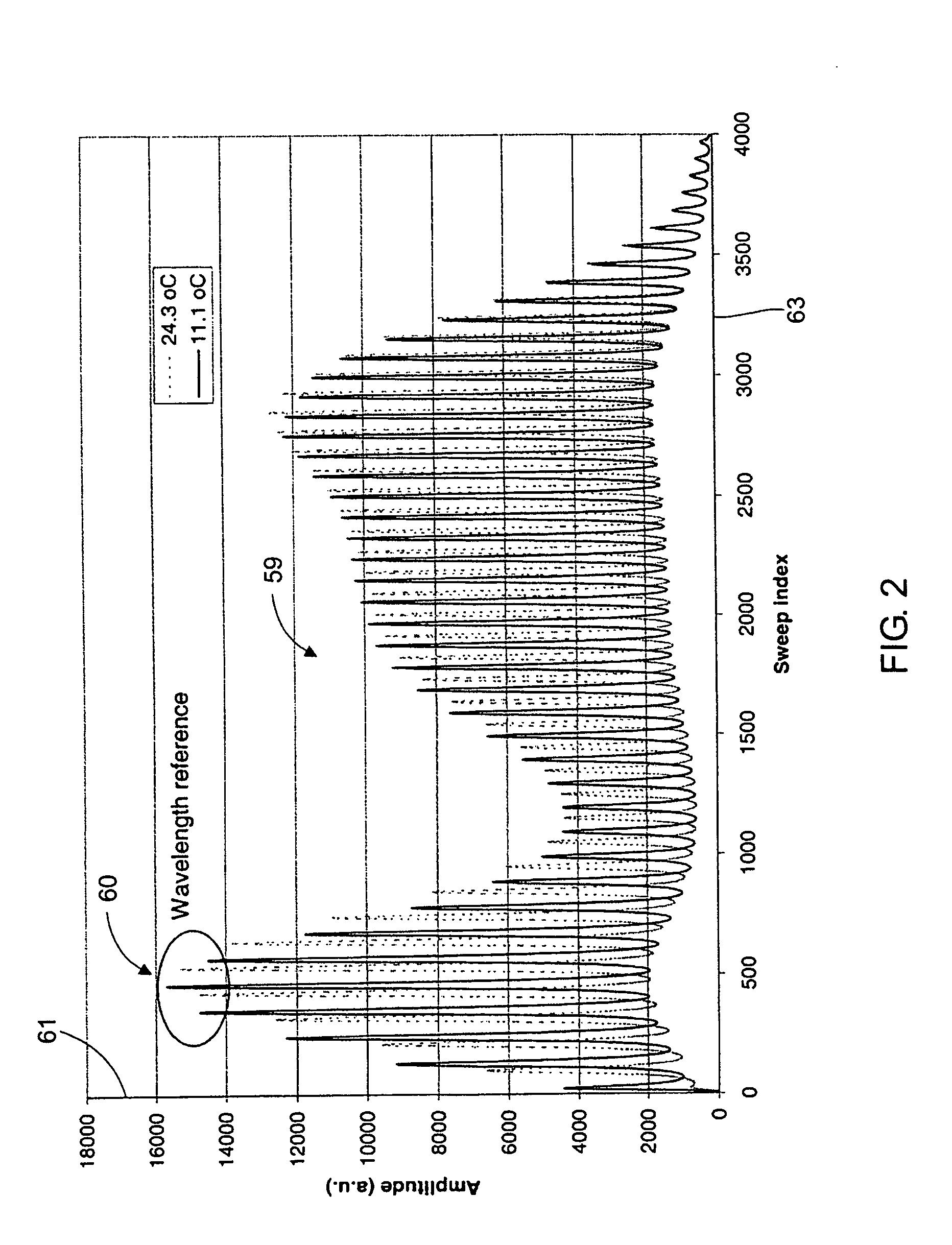Wavelength reference system for optical measurements
a wavelength reference and optical measurement technology, applied in the field of measuring optical wavelengths, can solve the problems of limiting the total available bandwidth, difficult to determine bragg wavelength, and uncertainty in the measured bragg wavelength
- Summary
- Abstract
- Description
- Claims
- Application Information
AI Technical Summary
Benefits of technology
Problems solved by technology
Method used
Image
Examples
Embodiment Construction
[0025] The present invention provides for a method and apparatus for accurately determining optical wavelengths. Such methods and apparatus are particularly well suited for determining Bragg wavelengths of FBG elements. As such, the principles of the present invention are illustrated in a wavelength measurement system 8 having wavelength multiplexed FBG elements 12 on an FBG sensor array 13, reference FIG. 1. As shown, the FBG sensor array 13 may be comprised of one or more optical fibers 14 and 15. The wavelength measurement system 8 is suitable for measuring pressure and temperature in hostile environments such as occurs in oil wells.
[0026] The wavelength measurement system 8 determines the Bragg wavelengths of the FBG elements 12, which are then used to determine a physical parameter of interest. The wavelength measurement system 8 includes a light source that produces a narrow band, bandwidth-swept light beam having a characteristic spectrum that scans across a wavelength band ...
PUM
 Login to View More
Login to View More Abstract
Description
Claims
Application Information
 Login to View More
Login to View More - R&D
- Intellectual Property
- Life Sciences
- Materials
- Tech Scout
- Unparalleled Data Quality
- Higher Quality Content
- 60% Fewer Hallucinations
Browse by: Latest US Patents, China's latest patents, Technical Efficacy Thesaurus, Application Domain, Technology Topic, Popular Technical Reports.
© 2025 PatSnap. All rights reserved.Legal|Privacy policy|Modern Slavery Act Transparency Statement|Sitemap|About US| Contact US: help@patsnap.com



